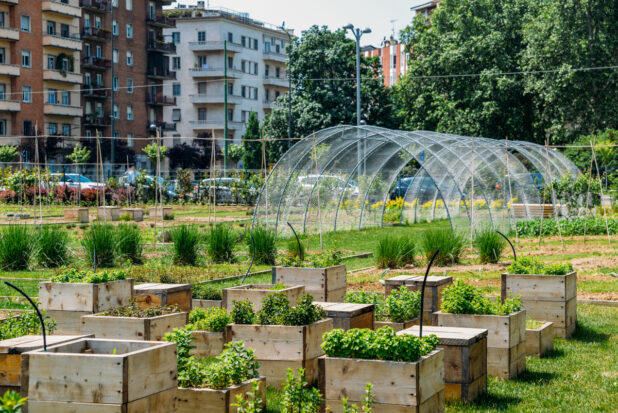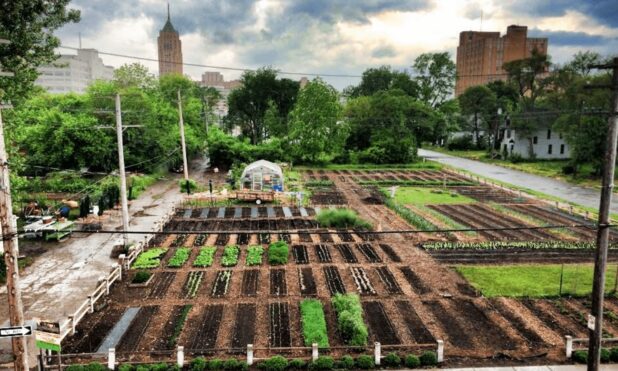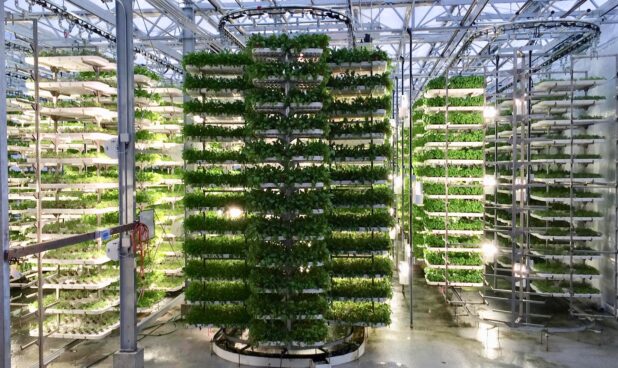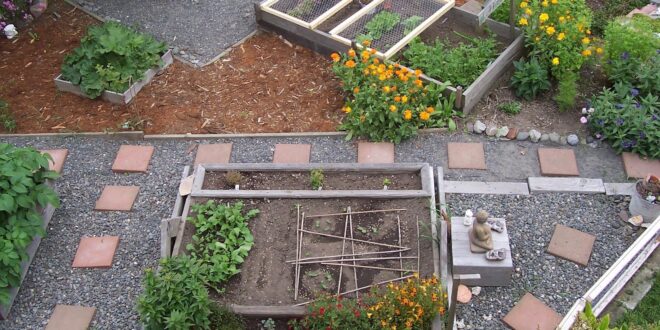As stated by the UN reports from 2018, more than 50% of the world’s population today lives in urban areas. That number continues to rise and it’s expected to reach close to 75% by 2050. This colossal shift towards urban environments means that food production is largely left to big corporations working in commercial agriculture.
This shift has not gone without obvious effects, particularly in the way city-dwellers consider and consume food. In their minds, there’s a disconnection between food production, and the food itself. Essentially, they’ve stopped thinking about what they’re eating so their health has started to deteriorate as they mostly consume heavily processed and ready-made foods laden with salt and sugar.
All of this also has detrimental effects on biodiversity. Modern commercial agricultural practices destroy the soil and insect populations, and native flora and fauna are slowly but surely disappearing, even though they’re the healthy sources of food. Why? Because if something doesn’t sell, it’s discarded.
Table of Contents
Urban agriculture defined

With such complex issues, there’s no single ideal solution. However, many of them can be mitigated by the way of urban gardening and agricultural initiatives.
Experts and educators define urban agriculture as growing or producing food in an urban environment. It comes in various forms, the most popular being community gardens, urban farms, and hydroponics or aquaponics programs.
Urban agriculture programs are instrumental in helping local communities economically and socially as they enable people to create a more immediate connection to their food, as well as help boost a local economy.
Why urban agriculture matters
Urban agriculture matters on many levels and one of them includes high school education programmes where young students are given opportunities to try things out. Starting urban agriculture education at this age is important as this is the time when students shape their own worldview, and presently, it’s heavily influenced by agriculture. Students are starting to connect their lessons to real-world problems and beginning to realize that they can get into agriculture and do something important.
These high school kids start with their simple urban gardens and also raise chickens and goats, but they have also begun to do research projects as they understand that parts of the solutions lays on them as well. Thinking about the year 2050, it’s clear that urban agriculture offers answers so it’s important to understand that there is a need for these school programmes to exist. Working with kids at this age will get the ball rolling and bring about innovative solutions for the future.
Benefits of urban agriculture

Humans will likely continue to move to cities more and more, and the decline in health and biodiversity will continue as well. Losing touch with nature in cities is almost inevitable. However, with some enthusiasm, innovation, creativity and community, cities don’t have to be miserable places.
Urban agriculture can be the solution that brings back nature to the urban sprawl. Cities can produce much of the food they need and remind and educate people about what it takes to grow nutritious and healthy food. Children can be educated as well about sustainable food and the health benefits and stop being the generation of fast foods and instant meals.
The biggest benefits of growing your own food are having healthy, nutritious food like vegetables, fruits, and herbs that are low in cholesterol, high in fibre, and contain beneficial vitamins and nutrients. Urban gardening offers exactly this for city families. Wherever they have space, whether it’s container gardening, hydroponic gardening, and rooftop gardening, families can produce their own food.
One great solution is constructing a greenhouse (for more information please visit Jim’s Mowing) . It eliminates the worry about environmental conditions like drought or cold weather and allows you to control the location. Your plants will be protected from the elements especially if you live in a colder area of Australia.
Another recent encouraging development is the rise of urban beekeeping. These projects are primarily realized on rooftops with the aim of preserving diminishing bee populations by providing them with hives. In this way, bees take advantage of urban pollution and seek out the weeds taking over in abandoned sites all over the city. The beekeepers benefit from learning about these precious pollinators and are very often able to make a bit of a profit by selling their honey to local businesses.
Making it work anywhere

Urban architecture is not the most favourable ground for plants, but there are many disregarded and abandoned spaces that can be utilized. Through the efforts of people with a vision for the future, these places are being transformed into food production areas.
Some examples of transforming spaces for food production purposes include unused corridors beneath electrical lines being turned into gardens. Also, awkwardly placed and shaped plots along rivers, in industrial zones, between buildings, on building rooftops, and so on can also be turned into food production areas. As a result, people are starting to claim these spaces and grow their own food.
Urban gardening enthusiasts have petitioned their local city councils to allow them to utilize these spaces, and in many cases, the results are positive. With people invested in creating and maintaining their urban gardens, the city can reduce the amount of upkeep expected from them.
There are positive effects everywhere – urban gardening plots bring like-minded people together and create communities where you can swap tricks and tips, watch out for each other, and share food and seeds. Also, certain entrepreneurs and organisations are taking it to a new level – they find abandoned warehouses and factories and turn them into highly productive indoor farming operations.
Urban gardening may not save the world, but it offers a brighter glimpse into our future. Agriculture programmess that involve young people can potentially improve the health and longevity of a community. Urban agriculture allows young people to invest in their community and educate themselves and the people around them about the benefits of urban agriculture as it is clearly a precious investment into the future of all of us. Also, it gives us hope and assurance that agriculture will continue to carry the same core values it always has – health, education, quality time spent with family, and community advancements.
 World Magazine 2024
World Magazine 2024






